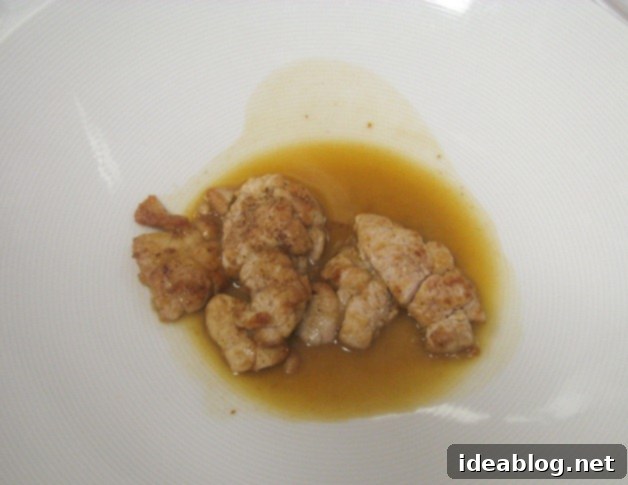Culinary School Week 19: Mastering Seafood, Sweetbreads, and Make-Ahead Soufflés
Week 19 at culinary school presented a dynamic and notably different pace than usual. The kitchen buzzed with a unique energy, primarily due to the absence of Chef Patrice, who was out of town leading several cooking demonstrations in Texas. This shift meant Chef Michel and our capable assistant, Allyson, were at the helm, guiding us through a highly condensed and challenging curriculum. Our schedule was particularly tight, with only two dedicated production days for hands-on cooking, followed swiftly by an exciting wine field trip the next day, and another intense Market Basket challenge looming on Friday. This compressed timetable demanded heightened focus and efficiency, pushing us to adapt quickly and refine our skills under new leadership. Each day was packed with essential techniques and ambitious dishes, reinforcing the rigorous nature of professional culinary training.
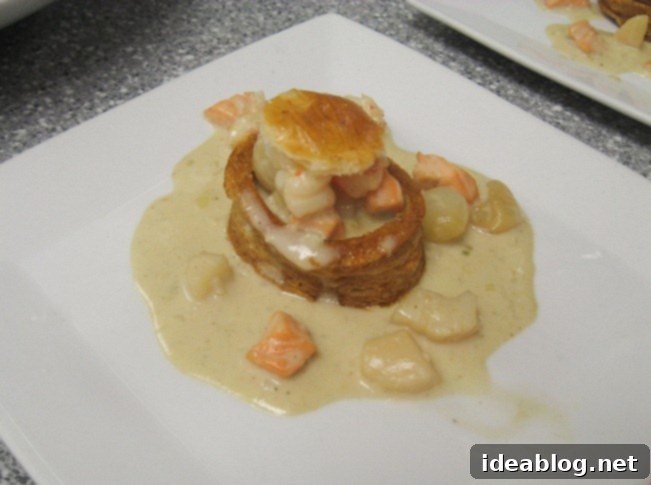
A Luxurious Start: Seafood Chowder in a Vol au Vent
Our first culinary endeavor of the week was a decadent seafood chowder, meticulously crafted and elegantly served in a classic vol au vent—a large, impressive puff pastry cup. This dish immediately plunged us into the world of refined French cooking. The seafood selection was a celebration of freshness, featuring tender scallops, succulent shrimp, and rich salmon, all meticulously cut into small, uniform pieces to ensure even cooking and a delightful texture in every bite.
To prepare the seafood, we poached it quickly and delicately in a rich, reduced fumet, a concentrated fish stock that formed the flavorful base of our chowder. This fumet was further enhanced with finely diced shallots and a touch of vermouth, adding aromatic depth and a subtle hint of complexity. Once the seafood was perfectly cooked, we transitioned to creating the luxurious velouté sauce. This involved expertly incorporating a roux—a classic French thickening agent made from equal parts flour and butter—into the stock, followed by a generous addition of cream. The result was an incredibly rich and velvety chowder, brimming with oceanic flavors and a satisfyingly creamy consistency. Though undeniably indulgent, the dish was a testament to the power of classic techniques and fresh ingredients, leaving a lasting impression on our palates.
Embracing the Unfamiliar: The Sweetbreads Experience
Tuesday brought with it another challenge in the form of a protein I had never encountered before in a cooking context: sweetbreads. The name itself is quite deceptive, bearing no resemblance to anything sweet or bread-like, which often leads to initial curiosity or apprehension. To be entirely candid, my initial enthusiasm for this item on the syllabus was rather low. I am well aware that many culinary enthusiasts and gourmands cherish sweetbreads as a delicacy, but I harbored no expectation of joining their ranks.
However, a core tenet of professional culinary training is the willingness to try everything, regardless of preconceived notions. My experience with calf’s liver in Phase I had left me with a strong feeling that sweetbreads might not be my preferred protein, yet I approached the task with an open mind, ready to learn and execute.
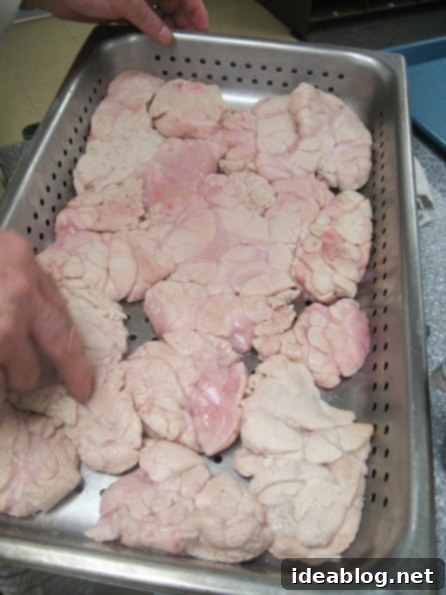
Understanding Sweetbreads: A Culinary Insight
For those unfamiliar with this unique ingredient, sweetbreads are an organ meat, specifically the thymus gland, typically sourced from young veal or lamb. While sweetbread can also refer to the pancreas, in our culinary class, we focused on preparing the thymus. This specific gland is chosen from young animals because it significantly shrinks in size as they age, making it less suitable for culinary applications. This level of detail might be more than the casual reader cares for, but in a professional kitchen, understanding the origin and characteristics of every ingredient is paramount.
Aesthetically, sweetbreads are not inherently attractive; their texture can often resemble that of brain tissue, which can be off-putting to some. Proper preparation is crucial to transforming this raw ingredient into a delicious dish. The process typically begins with soaking the glands in water to purge any residual blood, followed by poaching. This initial treatment helps to firm the sweetbreads and remove impurities, preparing them for further culinary techniques.
Braised Sweetbreads with Spinach Gnocchi
For our primary preparation, we opted for a classic braise, a slow-cooking method that tenderizes the sweetbreads and infuses them with rich flavors. This braised dish was served alongside vibrant spinach gnocchi. We had previously explored other variations of gnocchi in Phase I of our program, experimenting with different ingredients and styles. However, this particular preparation marked our first foray into the classical method, utilizing riced potato as the foundational starch.
To add both color and a subtle earthy flavor, we incorporated pureed spinach directly into the gnocchi dough. While the gnocchi was certainly edible and offered a good learning experience, I found it to be merely “okay”—it didn’t quite achieve the light, pillowy perfection of the best gnocchi I’ve had. Nevertheless, it was an invaluable opportunity to master the classical techniques involved in this beloved Italian pasta.
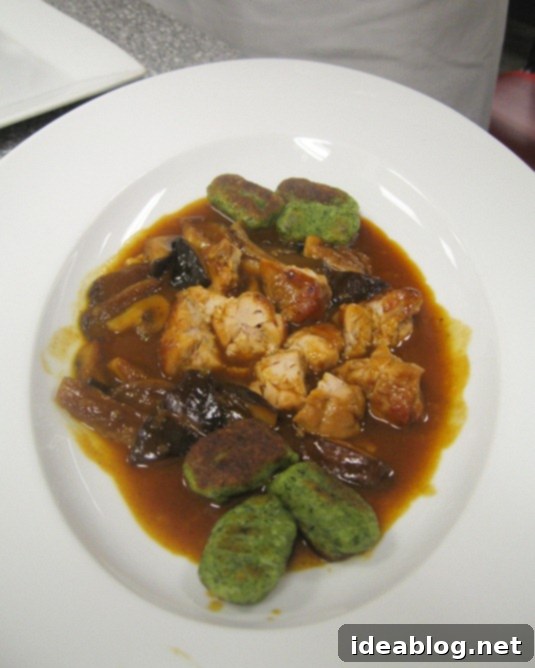
A Simple Pan-Fried Variation and the Tasting Experience
To ensure a comprehensive understanding of sweetbreads, our Chef also demonstrated a more classical, simple preparation: pan-fried sweetbreads served with just a squeeze of lemon juice. This minimalist approach allows the natural flavor and texture of the sweetbreads to shine through. While I’ve made a personal commitment to taste every dish we prepare in culinary school, I must admit, I approached this particular tasting with a fair degree of trepidation. My previous experiences with offal had instilled a certain caution.
My honest opinion? It was not as unappealing as I had braced myself for. Surprisingly, the texture was quite pleasant, akin to tender chicken or a firm mushroom, offering a satisfying bite. However, about thirty seconds after my initial taste, a distinct, slightly metallic and “iron-y” aftertaste emerged. While not overwhelmingly unpleasant, it was enough to confirm that sweetbreads are not likely to become a personal favorite. Consequently, I politely declined seconds during lunch, concluding my adventurous culinary exploration for the day.
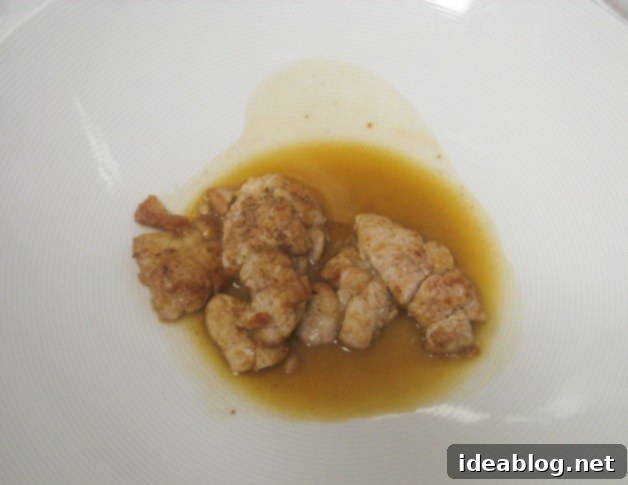
The Grand Finale: A Make-Ahead Raspberry Soufflé
To conclude our intensive day of cooking, we shifted gears to patisserie, preparing a delicate and visually stunning raspberry soufflé. This wasn’t just any soufflé; it was a distinctive variation that set itself apart from the other methods we had learned. The key differentiator lay in its unique base, which comprised a simple yet effective combination of egg yolks, sugar, cornstarch, vibrant raspberry puree, and a small amount of lemon juice. The cornstarch, in particular, was the distinguishing characteristic that contributed to its unique structure and stability.
Once the base was perfected, we carefully incorporated whisked egg whites, which had been stabilized with a small amount of cream of tartar and a pinch of salt to achieve maximum volume and stability. These aerated whites were gently folded into the raspberry base, creating a light, airy mixture ready for baking.
What truly makes this soufflé method exceptional, especially in a professional kitchen or for entertaining at home, is its remarkable convenience. After filling our ramekins, we were able to place them directly into the refrigerator and hold them perfectly until service. This “make-ahead” capability is a game-changer compared to traditional soufflé preparations, which often require last-minute whisking of egg whites and delicate folding right before baking. It eliminates the stress and rush, making it an ideal choice for a sophisticated dinner party or any event where timing is critical. Despite its ease of preparation, the resulting soufflé was every bit as impressive and delicious as its more labor-intensive counterparts, showcasing its beautiful rise and intense raspberry flavor.
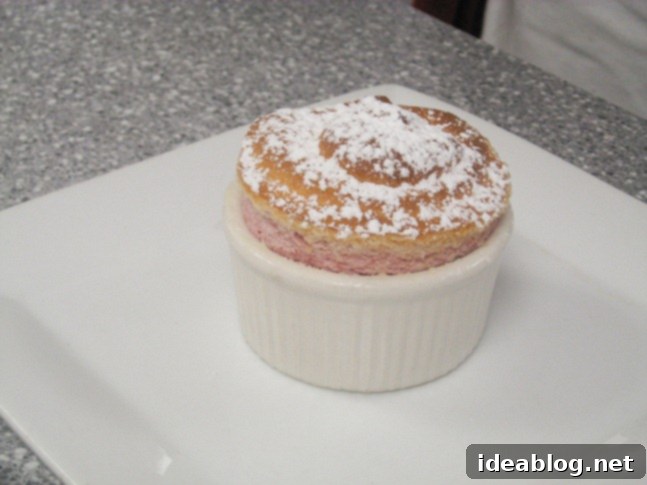
Beyond the Kitchen: Stages and Field Trips
Overall, Week 19 presented an incredibly interesting and diverse menu to prepare. However, the demanding nature of tasting rather than consuming full portions meant I often left school feeling rather hungry, a common occupational hazard in culinary training. Fortunately, I managed to get home just in time for a quick snack before heading out for my fourth—and quite possibly final—stage at a renowned restaurant in downtown D.C. These stages are invaluable opportunities to experience the real-world pressures and rhythms of a professional kitchen, offering hands-on learning that complements our classroom instruction. I immersed myself in the fast-paced environment from approximately 6 PM to 9:15 PM, before returning home to prepare for another early start at school.
I’ll be sharing more detailed insights about my upcoming externship experiences over the next week or two as I finalize my decision. The suspense has been building, and I look forward to finally disclosing the locations of all these exciting stages!
Adding another layer of excitement to our packed week, tomorrow promises a delightful break from the intensity of the kitchen. We are embarking on a much-anticipated field trip to Boxwood Winery in picturesque Middleburg, Virginia. This excursion is an integral part of our culinary education, offering us a chance to explore the world of viticulture, understand wine production, and enhance our knowledge of food and wine pairings. I’m especially excited to bring my good camera to capture the beauty of the vineyard and document this enriching experience. It’s moments like these that truly round out the comprehensive training provided by our culinary program, blending practical kitchen skills with broader industry knowledge and sensory appreciation.
